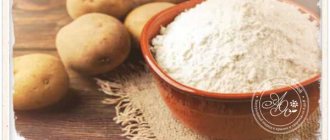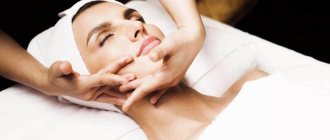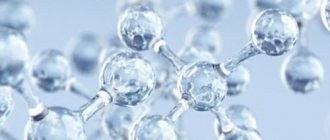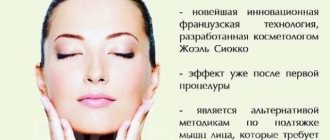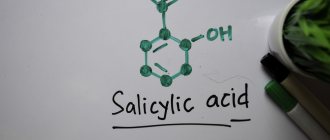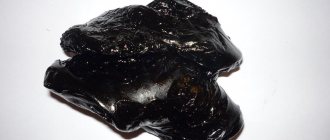Orange is actively used in home cosmetology, not only because it contains a rich vitamin composition (in particular, natural antioxidant - C and “beauty group” - B), but also because it is ideal for skin of absolutely any type and age. Thanks to this versatility, citrus is useful in programs to combat teenage acne, is used as an effective preparation for delicate skin whitening, and is part of anti-aging complexes to preserve youthful skin.
What are the benefits of orange for the face?
Orange is a fruit rich in vitamins and microelements that has exfoliant properties. It includes:
- thiamine;
- lactoflavin;
- folacin;
- pyridoxine;
- biotin;
- salicylic acid;
- niacin;
- vitamin A;
- fatty acid;
- monosaccharides.
Orange masks are beneficial for facial skin:
- remove age spots;
- smooth out unevenness and wrinkles;
- exfoliate dead skin cells;
- eliminate excess sebum (sebum).
In terms of effectiveness, homemade cosmetics made from oranges are not inferior to store-bought products with citrus extract.
Preparing the peel for use for cosmetic purposes
To prepare products for skin whitening, you can use the zest in fresh or dried form, its effect does not become less effective. Most often, dried orange peel is added to whitening masks. Preparation of the zest consists of three stages:
- Peel the fruit and place it carefully in a dry, sunny place.
- After several days (a week will be enough), the dried zest will need to be crushed using a blender or coffee grinder.
- Place the finished powder in a cool place for several hours.
After this, the zest can be used directly to make whitening masks. There are many recipes based on crushed orange peel that can provide gentle whitening to the skin. Since these masks do not contain artificial ingredients, they will not only be useful, but also safe. Masks will help you get rid of age spots and unhealthy complexion; it is important to choose the right recipe. As a rule, orange zest is added to other natural ingredients (milk, honey, yogurt), thereby the resulting product will lighten the skin, moisturize it and provide additional nutrition.
The most effective orange masks
Orange mask is a cosmetic mixture based on citrus juice or pulp, which has toning, exfoliating and brightening properties. Suitable for caring for problematic and healthy skin. To preserve maximum nutrients, fruit mixtures are prepared immediately before use. Depending on the cosmetic problem, they are used 1-3 times a week.
For acne
Acne is a consequence of decreased local immunity, incorrect functioning of the sebaceous glands and clogging of pores with sebum. Orange contains bioactive components that remove excess sebum, stimulate the skin barrier function and relieve inflammation.
Homemade masks with orange are washed off with mineral or boiled water. For rashes, it is recommended to use decoctions of plants with medicinal properties - coltsfoot, linden, calendula, chamomile, oregano, juniper.
Anti-acne face mask with orange:
- Made from chickpea flour. 1 tsp. Calendula flowers are poured into 30 ml of hot green tea. After 20 minutes, add 1 tbsp. l. chickpea flour and 15 ml orange juice. Treat problem areas on the face with the product. After a quarter of an hour, remove with a decoction of chamomile or yarrow.
- From soda. 15 g of soda is diluted with orange juice until a creamy mass is obtained. Apply it to acne and post-acne for 20 minutes. Wash with cool linden infusion or green tea.
To combat acne, cosmetic products are used once a day for 10 days. After the procedure, use anti-acne creams and ointments - Skinoren, Aknestop, Ichthyol and Retinoic ointment.
From blackheads
Open comedones are more common in oily and combination skin types. To remove them, use masks with abrasive particles or fruit acids.
Recipes for masks against blackheads:
- From citrus pulp. 1 tbsp. l. oranges are mixed with 2 crushed tablets of activated carbon. Add 10 ml honey, 1 tsp. cucumber juice Rub the mask into the T-zone for half a minute. After a quarter of an hour, wash with coltsfoot infusion.
- From the zest. Orange peels are crushed on a grater. 2 tbsp. l. the shavings are mixed with 15 ml of low-fat kefir, 3 ml of lemon oil. Rub into comedones using massage movements. After a quarter of an hour, remove with green tea.
To prevent blackheads, fatty creams are abandoned in favor of hydrogels with moisturizing additives - sodium hyaluronate, parsley extract, mandelic acid.
If you are prone to acne, the procedure is performed once every 3 days for 3 weeks.
For wrinkles
The acids and essential oils contained in orange stimulate the production of structural proteins. As a result, the skin texture is evened out and wrinkles become less noticeable. Make a mask twice a week a couple of hours before bedtime.
Recipes for anti-aging orange masks:
- From seaweed. 10 g of kelp powder is diluted with 1 tbsp. l. orange juice. Add 2 tsp. cocoa butter or castor oil. Keep the mask on your face for 30 minutes. Remove with warm decoction of linden or nettle.
- From plantain. 5 g of chopped plantain is poured into 50 ml of boiling water. After a quarter of an hour, add 1 tsp. orange zest, ½ tsp. semolina, 10 ml honey. Using massage movements, distribute the mass over the face. After half an hour, wash with mineral water.
Women over 30 years old are recommended to use moisturizing creams with a light texture after the mask. They should include elastin, kelp extract, collagen, vitamin C, betaine.
Tonic
A refreshing orange mask evens out facial tone, smoothes wrinkles and prevents aging. To prevent defects, use 1-2 times a week.
Mask components:
- 10 g calendula;
- 2 tbsp. l. orange zest;
- 1 tbsp. l. blue clay;
- 2 tsp. honey;
- 40 ml hot milk.
Calendula is poured with milk and left under the lid for 15 minutes. Mix with zest and clay. Add honey and mix thoroughly. Apply a thick layer to the face. After 25 minutes, remove with a decoction of oak or linden bark. They use cream with peptides, vitamin E, and tea tree oil.
In case of increased sensitivity, clay is replaced with seaweed powder or oatmeal.
Whitening
Fruit acids fight hyperpigmentation, post-acne and uneven complexion. To eliminate aesthetic imperfections, masks with orange are used up to 3 times a week for 1 month.
Whitening ingredients:
- 1 tsp. corn starch;
- 10 ml lemon juice;
- 1 tbsp. l. orange pulp;
- 2 tsp. honey
Starch is mixed with lemon juice and honey. Add orange pulp and heat the mask in the microwave for 10-15 seconds. Apply a thin layer to a moistened face. After 20 minutes, remove with distilled water or linden decoction. Moisturize the epidermis with a cream with a gel texture.
Rejuvenating
Masks with orange have a lifting effect. Citrus components affect the production of elastin and collagen and maintain hydrolipid balance. As a result, the skin becomes denser and more elastic. For the anti-aging mask you will need:
- 20 ml orange juice;
- 1 tsp. jojoba oils;
- 10 g gelatin.
Gelatin is poured with juice and placed in the microwave for 15 seconds. After 15-20 minutes, mix with jojoba oil. Apply the mask to the face in 2 layers with an interval of 5-7 minutes. After the top layer has hardened, it is removed. Wash with herbal infusion or mineral water.
For gravitational wrinkles, you should use special creams with a Botox effect. They contain argireline, adenazine, dihydrochalcones, which tighten and rejuvenate the face.
For oily skin
Orange is just as beneficial for facial skin as store-bought masks with absorbent ingredients. It removes excess sebum, making facial skin more matte and healthy looking. Preparing the mask is very simple:
- 1/3 of the orange is crushed in a blender along with the peel;
- pour in 20 ml of yogurt;
- add a pinch of sea salt and 2 tsp. honey
If there are comedones on the face, add 10-15 ml of lemon juice or 2 tsp to the product. white clay. Leave the mask on for no more than 15-20 minutes. Residues are removed with boiled water or linden decoction.
For dry skin
Dehydration is a consequence of thinning of the skin's hydrolipid mantle. To restore it, use masks with orange up to 3 times a week.
Preparation and application of cosmetics to the face:
- crush 2 tablets of ascorutin;
- dilute the powder with 2 tbsp. l. warm milk;
- mixed with 10 ml olive oil;
- add 2 tsp. orange pulp;
- leave the mask on the face for up to 20 minutes;
- wash off with warm chamomile decoction.
Finally, use serum or hydrogel with glycerin, urea, and lactic acid.
To improve complexion
For uneven complexion, use cosmetics with exfoliating and brightening effects. The regularity of caring procedures depends on the severity of skin defects.
Face mask components:
- 1 egg yolk;
- 5 g white clay;
- 10 ml orange juice;
- 1 tsp. curdled milk.
Curdled milk is mixed with white clay. Add fruit juice and yolk. If the mixture turns out liquid, add a little potato starch. The optimal mask exposure time is 15 minutes. Wash it off with cool mineral water or thyme infusion. Depending on the time of day, use day or night cream.
When post-acne occurs, abrasive particles are added to cosmetics - ground coffee, semolina, nut husks, soda, sea salt.
To tighten pores
Piglet tightening agents are used twice a week in the morning. For the mask you will need:
- white of 1 egg;
- 15 ml orange juice;
- 2 tsp. oatmeal
Beat the whites with a whisk. Flour is mixed with juice. Mix all ingredients thoroughly. Apply the mixture only to the face. After 15 minutes it is removed with green tea. Moisturize the skin with a water-based cream.
Nutritious
Dry skin needs moisture to replenish the deficiency of microelements, amino acids and vitamins. For increased sensitivity and irritation, nourishing masks are made up to 3 times a week.
Cosmetics for intensive skin nutrition:
- From cream. 10 g of zest pour 2 tbsp. l. cream. Add 4-5 drops of sandalwood oil. Apply to the neck and face for a quarter of an hour. Wash off with weak tea or cornflower decoction.
- From banana. Half a banana is passed through a meat grinder. Mix with 15 ml of fruit juice, 2 tbsp. l. honey Apply the thick mixture to a damp face. After 25-30 minutes, remove the remains with herbal infusion.
Before going to bed, be sure to use a night cream with moisture-retaining agents - wax, starch, mineral oils.
Orange: a little history, its chemical properties and calorie content
The famous orange fruit is loved by many not only for its taste. By the way, according to statistics, every second Russian calls this particular citrus his favorite fruit. The benefits of orange for the body are known to everyone. The juicy pulp refreshes, gives energy and improves mood. There are far fewer contraindications to its use than its medicinal properties.
Let's start with the history of the orange. Orange is the most famous and widespread citrus. The fruits grow on an evergreen tree. Orange flowers are large, pleasantly scented, and are collected for tea or sachets. According to some botanists, the orange may be a hybrid of a pomelo and a tangerine.
Initially, the orange tree looked completely different. It was low, covered with thorns and had bitter-sour fruits. They were not eaten, but trees began to be cultivated because of the beautiful bright color of the fruits. This happened in China 2300 BC. Gradually, the Chinese crossed trees with the brightest and sweetest fruits, and obtained new varieties.
In Europe, oranges were discovered only in the 15th century. Everyone appreciated the unusual and beautiful fruit, and made attempts to grow the tree in a new climate. To do this, it was necessary to build special greenhouses to protect the overseas fruit from the cold. They were called greenhouses (from the word orange - “orange”).
We borrowed the Russian name “orange” from the Dutch. They called it "appelsien" - which literally translates as "apple from China."
The main suppliers of oranges are still countries with hot tropical and subtropical climates: India, China, Brazil, and the warm states of America. In countries with cold climates, oranges can only be grown in greenhouses, since trees freeze in the open air.
Chemical composition of orange
Oranges are 85% structured water, which is beneficial for the body. Contains many useful substances
:
- vegetable fiber;
- pectin;
- phytoncides;
- antioxidants;
- organic acids;
- essential oil;
- monosaccharides;
- vitamins A, C, PP E and group B;
- iron, zinc, potassium, copper, calcium and other elements.
A large amount of pectin has a beneficial effect on the intestines and the functioning of the gastrointestinal tract. In addition, pectin suppresses the feeling of hunger, fights insatiable appetite and prevents the development of rotting processes in the intestines.
The peel contains much more useful substances than the pulp. The white partitions inside do not need to be thrown away; they are much healthier than the pulp.
Calorie content of orange
Orange is called a real storehouse of minerals, vitamins and biologically active substances. In addition, they are available to us all year round. It is especially useful to eat them in the cold season, when it is not possible to enjoy local fruits. Of course, we should not forget that producers can process fruits in every possible way so that they retain their freshness and presentation longer.
The calorie content of an orange is small - 40 kcal. It would seem that the benefits are obvious for those who want to lose excess weight. But you shouldn’t get carried away with citrus fruits, as they contain too much sugar. Orange juice is healthy, but its calorie content is 110 kcal, so it is better for those losing weight to drink lower-calorie drinks. In addition, all freshly squeezed juices, due to the lack of fiber in them, have a very strong effect on the pancreas, loading it extremely heavily. There is a large release of insulin due to the consumption of such an amount of fructose, such an “insulin bomb”.
How to use orange cosmetic ice
Rubbing the face with cosmetic ice leads to a sharp narrowing of blood vessels. The procedure has a toning, rejuvenating and tightening effect on the skin. Ice is prepared according to different recipes:
- Classical. Juice is squeezed out of citrus fruits. Pour it into molds and put it in the freezer for a couple of hours.
- From mineral water. Mineral water is mixed with orange juice in a 1:1 ratio. Pour into molds and freeze in the freezer.
Cosmetologists do not recommend making ice from packaged juice, as it contains dyes, flavors and preservatives.
Rub the skin with ice cubes 2 times a day - morning and evening. After 15 minutes, remove the remaining juice with a cotton pad soaked in mineral water or herbal decoction.
Why do you need to whiten your skin?
Why does facial skin lose its attractiveness and its color deteriorate? The most common causes of this common problem are:
- bad habits;
- constant exposure to the sun;
- diseases of internal organs;
- bad weather conditions;
- poor nutrition;
- problems with blood vessels.
In such cases, a woman invariably faces the question of how to make her facial skin attractive, as well as return it to a healthy color. In what cases will it be useful to use orange peel to whiten your skin?
- The appearance of age spots.
- Seasonal freckles.
- Too much tan.
- Naturally dark skin.
- Gray or yellow complexion, which appears as a result of bad habits or diseases of the body.
- The presence of traces (scars, nodules, broken capillaries) that may occur after cosmetic procedures.
Contraindications and precautions
The main contraindication for the use of oranges is individual intolerance. A negative reaction can be triggered by eating an allergen or contact with skin or mucous membranes.
Oranges contain a lot of fruit acids, so it is not recommended to introduce them into the diet in the following cases :
- gastrointestinal ulcer;
- gastritis with high acidity;
- pancreatitis;
- acute colitis;
- nephritis;
- hepatitis.
It is worth limiting the consumption of fruits if you have diabetes. After eating an orange or drinking its juice, you need to rinse your mouth with water, since acids have a bad effect on tooth enamel.
Important nuances
There are several recommendations that must be followed in order for orange essential oil to bring maximum benefits to the skin of the face and become its faithful assistant and reliable protector at any time of the year:
- The oil should be stored in a tightly closed dark glass bottle (otherwise the quality characteristics of the ether will suffer). You can distinguish genuine oil from a fake by dropping a small amount onto a sheet of paper - the counterfeit will leave a greasy stain, the natural ether will evaporate, leaving a yellow mark.
- The procedures are performed on skin that is cleansed of cosmetics and dirt, free from inflammation and damage.
- Baths, masks, scrubs and applications with orange oil are best done in the evening. Orange ether increases the skin's sensitivity to ultraviolet rays, which can cause burns, and in the mildest cases, the appearance of pigment spots; If going out into the world cannot be postponed, be sure to use a cream with a UV filter.
- It is important to adhere to dosages and not exceed the duration of the procedure - despite the fact that orange ether is used in conjunction with emollient components, it remains a chemically active substance.
- Masks with orange oil should be done no more than once a week, the course involves 10 procedures, and the break is at least a month.
- Exfoliating products can be used no more than once every two weeks for dry skin, once every seven days for oily skin.
- Any cosmetic compositions must be rubbed in the direction of the massage lines.
Scrubs and masks should be applied avoiding the area around the eyes; oil mixtures can be gently massaged into this area
All of the above recommendations are meaningless for pregnant and lactating women, as well as people with individual intolerance, suffering from hypotension, cancer and liver disorders, because in these cases the use of orange essential oil will have to be abandoned.


